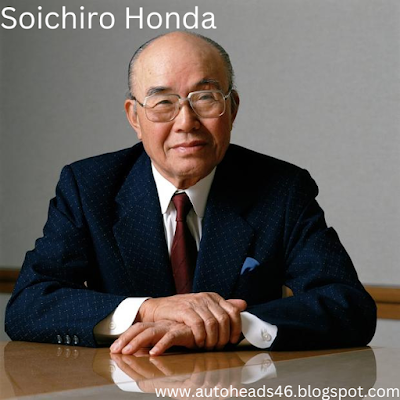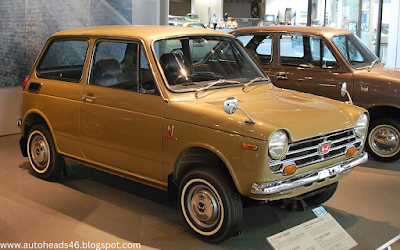History of Honda Motors, About Soichiro Honda and Company's Multinational Success
Honda Motors: How Soichiro Honda
Built a Global Success
Like many other major multinational corporations, Honda Motors owes its success to the vision and determination of its founder, Soichiro Honda. Born in 1906 in what is now part of the city of Shizuoka, Japan, Mr. Honda spent his youth tinkering with mechanical objects such as clocks and wristwatches, often creating his own from salvaged parts he had collected from the local dump. At age 15, he built his first car using a motor scavenged from an American military jeep left behind after World War II ended. Honda produces more than 14 million internal combustion engines every year. Its the second highest producer of internal combustion engines.
From Motorcycle Repair Shop to
Innovative Company
Honda has been the most extensive motorcycle producer since 1959; at the end of 2019, its production reached 400 million. The company also produces automobiles, power products, and aircraft. Takahiro Hachigo leads the company as president and CEO. In July 2008, it was announced that Honda had developed the world's first hybrid electric car to use regenerative braking technology, which gives energy back to the battery without charging it like a conventional hybrid. Fit EV was released for lease on June 15th, 2012. It went on sale in the United States five months later. The Honda Fit EV uses nickel-metal-hydride batteries and can be fully charged from empty to full in about 3 hours when plugged into a 220-volt outlet. It was initially available only in California, with leasing priced at $399 per month plus tax or a purchase price of $36,625
War Brings Globalization
One of the most critical events in the history of Honda Motors is the Second World War. As Japan became embroiled in war, its new premier, Hideki Tojo, appointed Soichiro honor to take charge of wartime production efforts. This was an opportunity for him to show what he could do with limited resources.
He had already been successful as an engineer and designer, and now he would be allowed to prove his abilities as a manager. In 1936, he co-founded Tōkai Seiki Co., Ltd., which later became Honda Motor Company Limited. In 1938, Soichiro designed and produced Japan's first motorcycle called Doremi Fasorin 50cc 4Cycle Type A1 for Doremi Industries, which means Good Fortune. It was introduced at the International Cycle Show at the Arches in London on September 30th. The following year it won the Gold Medal at Paris' International Exhibition (Universal Expo) and sold 8,500 units within that same year. Shortly after this success, he built his factory to make bicycles and motorized bikes.
Go Like Hell
Soichiro Honda was born on September 17th, 1906, in the rural region of Nara, Japan. After graduating high school, he got a job with Tokyo Art Shokai, an established automobile, and motorcycle parts supplier. That company's founder, Mr. Keiichi Matsuda, was one of the first Japanese businessmen to see the potential in developing and producing gasoline-powered vehicles.
Though he had no formal engineering training and little education about engine design or production methods, Mr. Honda became interested in automobiles and began experimenting with them at home. In 1937, he quit his job at Tokyo Art Shokai to open a repair shop specializing in imported European cars. He named it Honda after his family name. He quickly found success, attracting wealthy customers who preferred to buy imported luxury cars because they were expensive and not rationed, as were most Japanese products during World War II. Even before the war ended in 1945, Mr. Honda wanted to produce his car--an affordable vehicle that would be as powerful as any other car on the market but still easy enough for ordinary people like him to maintain themselves.
Going Public
Its first luxury brand was released in 1986, named Acura; Honda also produced artificial intelligence robots ASIMO in 2000. Honda has joined ventures with china, such as Dongfeng Honda and Guangqi Honda. In 2013 Honda invested its $6.8 billion in revenue in research and development; Honda is the first in japans’ automobile industry to export 108,705 Acura models to the US, while imports are lower at 77,892 units. As of March 2014, it is one of the world's largest motorcycle manufacturers.
New Challenges
Learning about the history of this global company was fascinating. It made me realize that even though I've been doing pretty well for myself in the past few years, I still have so much to learn. There's always room to improve and try new things; if you're not challenging yourself, you'll never know what could happen! For example, it sounded like they didn't know how to go about it when they started making cars. But because they were willing to keep trying until they got it right, now their vehicles are some of the best on the market!
Innovation Sparks Competitors Section
9) the Beginning of the End
It all began in 1885 when the founder of Honda Motor Company was born. After showing a knack for engineering early, he dropped out of school to pursue his passion full-time. His first job was repairing bicycles at a factory. He soon realized that he wasn't just good at fixing bikes; he had an innate gift for designing them too. For example, he redesigned the bike's wheel by attaching it to its spokes, making it lighter and more durable. In 1936, after years of hard work and honing his skills as an engineer, Soichiro Honda finally got the chance to start his own company. When World War II broke out in 1941, Japan began manufacturing engines for airplanes and tanks. As part of this effort, Honda designed a small motor for powering generators called the Type A engine. More than 20,000 were installed in these machines. However, only two years later, the Allies bombed Nagoya, where Honda's plant was located. The aftermath of WWII forced him to rebuild his business from scratch again. Still, by 1949 he would release the world's first motorcycle with hydraulic brakes and a clutchless shifting system – enabling riders to change gears without using their hands or feet - making it easier and safer for women to ride a bike.
Conclusion
Thank you for reading this blog post! I hope you found it informative. If you have any questions, please contact me through my email at insert email.
Also Read About This:
https://autoheads46.blogspot.com/2022/10/history-of-suzuki-japans-origin.html




.png)

.png)




0 Comments